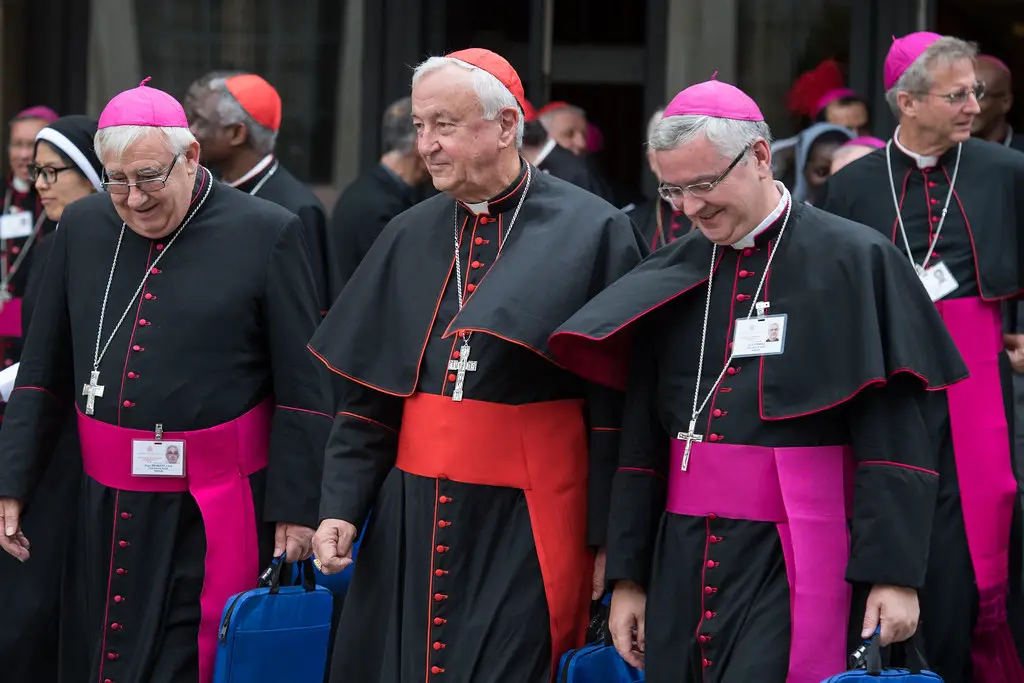Doctrine
What is Synod of Bishops in the Catholic Church
In the intricate mosaic of the Catholic Church’s hierarchical structure, the Synod of Bishops stands as an essential institution, fostering dialogue, unity, and guidance. This article explores the Synod of Bishops in the Catholic Church, delving into its history, purpose, and its role in shaping the Church’s present and future.
The Synod of Bishops: An Overview
The Synod of Bishops, often referred to as the Synod, is an assembly of bishops from around the world who convene periodically to discuss matters of faith, doctrine, and pastoral challenges. It is an advisory body to the Pope, serving as a channel for open dialogue and collaboration within the Church’s hierarchical structure.
A Brief History of the Synod of Bishops
The Synod of Bishops was established by Pope Paul VI in 1965 during the Second Vatican Council. Its roots, however, can be traced back to earlier centuries when popes sought counsel from bishops through various means. The contemporary Synod structure aimed to create a more formalized, international forum for discussion.
- Vatican II and the Synodal Model: The foundation for the modern Synod was laid during the Second Vatican Council (1962-1965), which emphasized the importance of episcopal collegiality and the need for greater collaboration within the Church. The Synod became a prominent expression of this collegiality.
- Pope Paul VI’s Apostolic Letter: In 1965, Pope Paul VI promulgated an Apostolic Letter titled “Apostolica Sollicitudo,” which officially established the Synod of Bishops. This letter outlined the Synod’s purpose, structure, and procedures, solidifying its place within the Church’s governance.
The Purpose and Function of the Synod
The Synod of Bishops serves several crucial purposes within the Catholic Church:
- Advisory Role: One of the primary functions of the Synod is to provide advice and counsel to the Pope on important matters facing the Church. It enables bishops to share their pastoral experiences and insights, allowing for a broader perspective on issues.
- Doctrinal Clarification: The Synod addresses theological and doctrinal questions, seeking to provide clarity on matters of faith and morals. This helps guide the faithful and ensure doctrinal integrity.
- Pastoral Care: The Synod explores pastoral challenges and develops recommendations to address them effectively. This includes issues related to the family, evangelization, social justice, and more.
- Fostering Collegiality: By bringing together bishops from around the world, the Synod fosters a sense of collegiality and unity within the global Church. It encourages dialogue and collaboration among bishops of diverse backgrounds and experiences.
The Synod’s Structure and Process
The Synod’s structure includes the Pope, who serves as the head, and the Synod of Bishops itself, composed of bishops and other Church leaders. The Synod convenes in Ordinary General Assemblies, which are held at regular intervals, and Extraordinary General Assemblies, which address urgent or specific issues.
During these assemblies, participants engage in open discussions and submit proposals and recommendations. The outcomes of the Synod are conveyed to the Pope, who may issue Apostolic Exhortations or other documents in response to the Synod’s deliberations.
Controversies and Challenges
The Synod of Bishops has not been without controversies. Debates have arisen over various issues, including pastoral practices, doctrinal interpretations, and issues related to family life. The Synod, however, remains a forum for discussing these challenges and seeking consensus within the Church.
Conclusion
The Synod of Bishops is an integral part of the Catholic Church’s governing structure, embodying the principles of collegiality and dialogue. Through its history, purpose, and functioning, the Synod contributes to the Church’s unity, guidance, and response to the evolving needs of its members. In an ever-changing world, the Synod continues to serve as a vital forum where bishops come together to guide the Church on its spiritual journey.
About Author
































